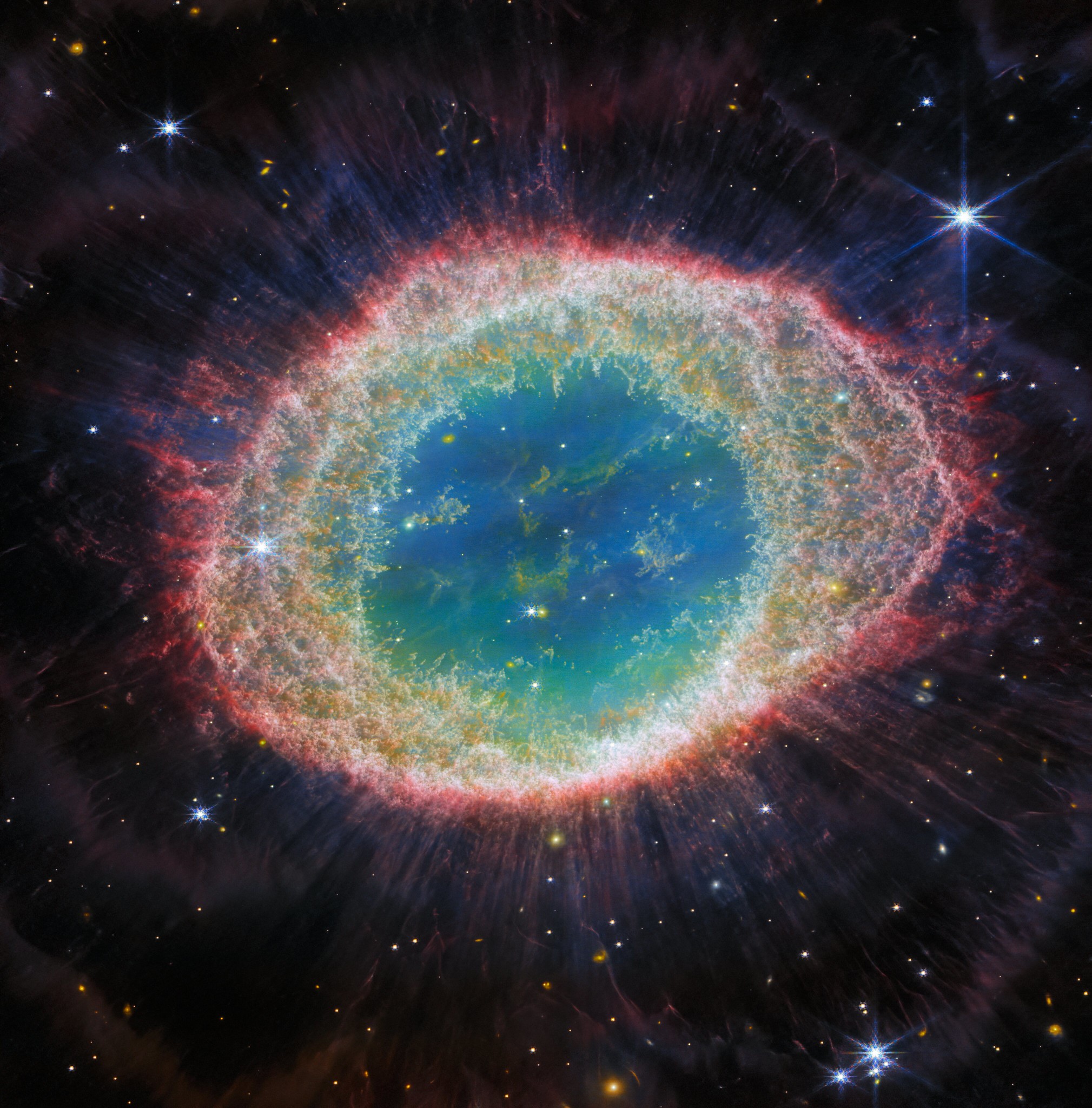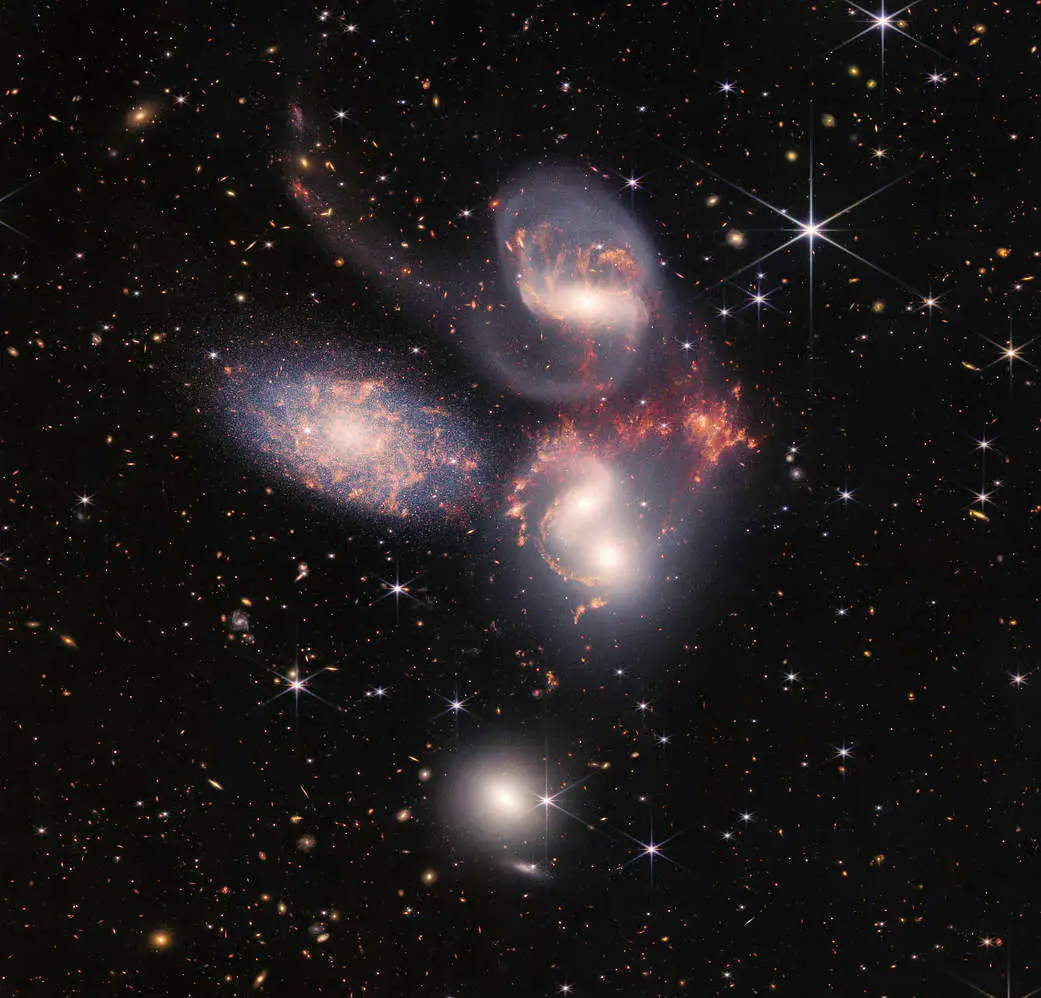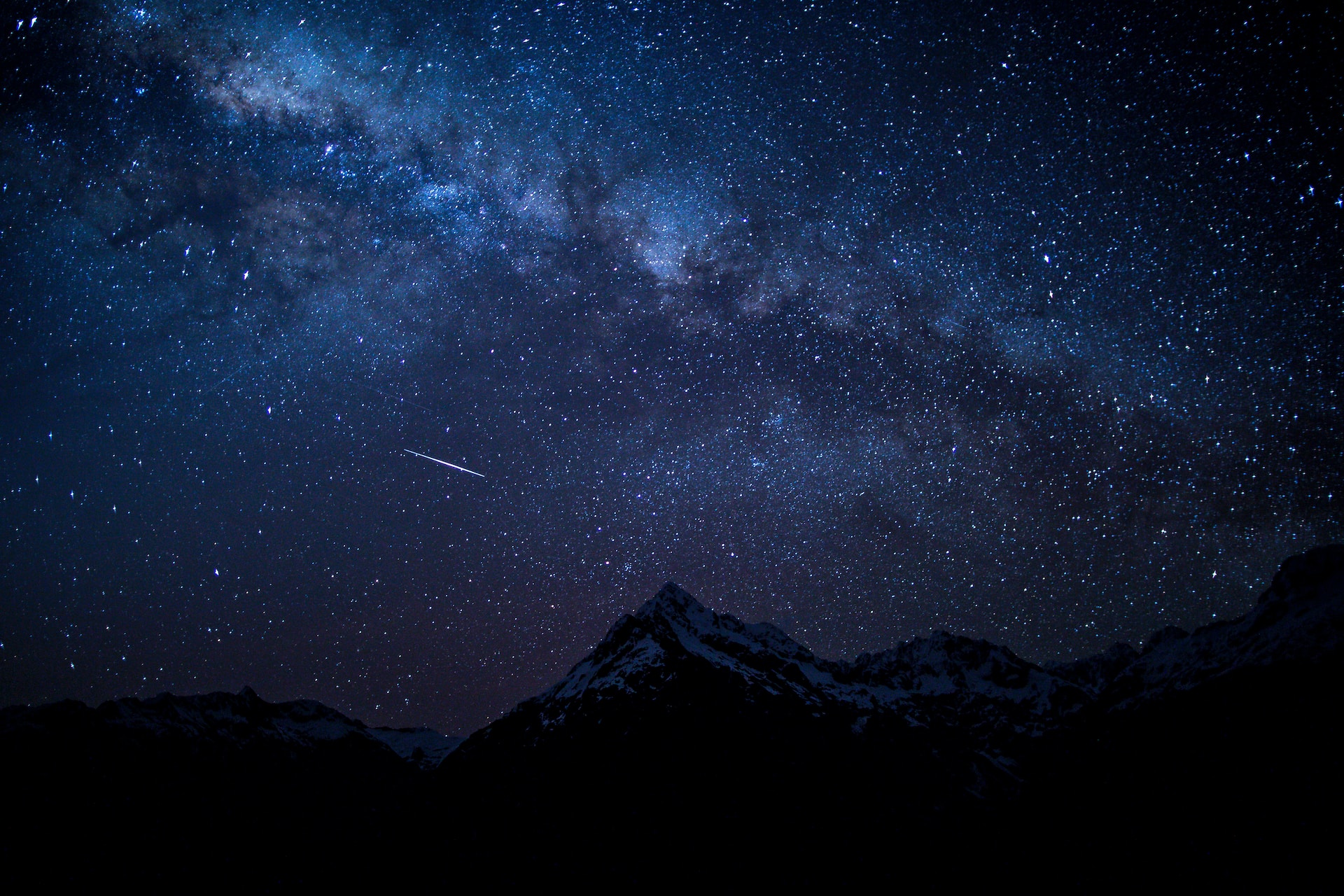Why we’re fascinated by space photos
What we can’t see with the naked eye fills us with wonder and dread
Alexa Robles-Gil • October 25, 2023

A detailed photo of a dying star at the center of the Ring Nebula. [Credit: ESA/Webb, NASA, CSA, M. Barlow (University College London), N. Cox (ACRI-ST), R. Wesson (Cardiff University) | CC BY 2.0 ]
There is a universal feeling that comes from the thrilling rush of wonder of looking up at a sky full of stars. An upward glance, and suddenly our small lives are held up against the scale of the universe, making us feel both insignificance and awe.
Those feelings have only intensified since July 2022, when NASA released the first brilliant images of space objects taken by its powerful James Webb Telescope. Why do these photos leave us so awestruck? And why do they fill us with fascination and, perhaps, even dread?
Part of the answer, surely, is that we have never seen anything like them. Space photos are powerful in a way that is difficult to explain. When we say “out of this world” what we really mean is “out of our line of sight.” Space photography makes visible that which is invisible to the human eye: objects and nightscapes unknown to us.
During a recent conversation at the Simons Foundation in New York, three people who approach space photography from different perspectives sat down to discuss the mysterious power of the genre: Giulio Fabbian, an astrophysicist at Cardiff University; Rhiannon Adam, an artist who wants to use film photography on a space mission; and Ian Lauer, an astrophotographer who tries to reconnect people with the stars. They discussed the complexities and importance of space photography to a crowd of more than one hundred people.
“Astrophotography is the ultimate intersection of science and art,” Lauer said, who shared photos of the Milky Way he took on camping trips. He wants his photos to inspire people to go to places with dark skies where they can see the stars.
Behind every gorgeous image taken by Webb and other space telescopes “are years and years of work,” Fabbian said, explaining that every photograph requires lots of planning and processing. His research involves using images of deep space to study dark matter. He does this through a complex process that involves inverting the light produced by stars and galaxies in the photos.
To Fabbian, space photography expands our perspective by making us realize not only how small we are and how much we have yet to understand, but also “how much we can understand about the universe.”

With its powerful, infrared vision, the James Webb Space Telescope shows never-before-seen details in five galaxies. [Credit: NASA, ESA, CSA, STScI | STScI License]
Some of that understanding can also come from trips to outer space. Adam’s goal is to create art in outer space. She has been selected to be part of the first civilian mission to orbit the moon. The weeklong “dearMoon” mission will use a SpaceX spacecraft. Adam plans to take analog photos that illuminate the invisible, helping create a connection between art and science. Space can be intimidating, which is why she hopes to use photography to “hide the complexity in something that communicates well.”
But for many people, space is something they can’t access at all. Lauer’s worry is that we are losing our connection to the stars thanks to light pollution. “We’ve always had the stars with us,” he said, “and this is the first generation of humans who don’t see them from their homes.” His passion for space photos comes from a camping trip to Death Valley when he was 19, which was “the first time I saw the stars as they were meant to be seen.”

Nightscape with the silhouette of a mountain peak in New Zealand. [Credit: Phil Botha | Unsplash License ]
Astrophotographers like Lauer who use at-home optical telescopes have a different view than space telescopes such as Hubble and Webb. They capture wide-field images that encompass more space, while the orbiting observatories hone in on much smaller fields and objects, rendering them in extraordinary detail.
The problem for earthbound astrophotographers, Lauer said, is that they are hampered by artificial light. A review published in Science earlier this year highlighted some of the difficulties astrophotographers are facing with light pollution. There is a growing worldwide dark-sky movement that seeks to curb light at night, which can not only hamper scientific observations but also dampen cultural connections to the night sky.
The power of astrophotography goes beyond a beautiful photo, they all agreed. It connects us to the greater cosmos and ties us together as a species. NASA’s powerful space telescopes are important, and so are amateur photographers. Space photos dazzle in part because they spark an emotional and intellectual response that brings us together. Together, we can ponder the great existential question: Who are we in the grand scheme of the universe?
Astrophotographer Mihail Minkov, who won Milky Way Photographer of the Year 2023 and was not present at the Simons Foundation event, thinks we’re fascinated with space photos because of the questions they trigger.
“I think bringing this visual mystery of the cosmos with some story as an image triggers something deep inside every one of us, maybe some lost connections with the infinity,” Minkov said. “Because we are definitely part of something bigger.”